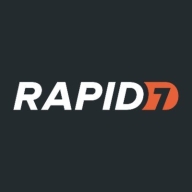

VMware Aria Operations and Rapid7 InsightCloudSec are competing cloud management and security platforms. Rapid7 InsightCloudSec seems to have an upper hand in security and compliance capabilities, making it ideal for enterprises prioritizing cloud compliance.
Features: VMware Aria Operations offers capabilities such as advanced performance monitoring, capacity optimization, and integration with VMware products, making it essential for VMware infrastructure users. Rapid7 InsightCloudSec is noted for real-time threat detection, asset discovery, and compliance automation, ensuring strong cloud security.
Room for Improvement: VMware Aria Operations could enhance its support for non-VMware environments, simplify its user interface, and improve real-time analytics. Rapid7 InsightCloudSec could benefit from better integration with on-premises solutions, expanded proactive threat detection, and more granular reporting options.
Ease of Deployment and Customer Service: VMware Aria Operations provides streamlined deployment in VMware ecosystems with efficient support. Rapid7 InsightCloudSec offers smooth deployment across multiple clouds, excelling in customer support for setup and troubleshooting.
Pricing and ROI: VMware Aria Operations pricing aligns with its comprehensive suite, offering high ROI for VMware-focused operations. Rapid7 InsightCloudSec offers competitive pricing, delivering substantial ROI with its extensive security features, justifying higher initial costs for security-focused enterprises.
| Product | Market Share (%) |
|---|---|
| VMware Aria Operations | 6.7% |
| Rapid7 InsightCloudSec | 0.6% |
| Other | 92.7% |


| Company Size | Count |
|---|---|
| Small Business | 62 |
| Midsize Enterprise | 62 |
| Large Enterprise | 278 |
Rapid7 InsightCloudSec is a comprehensive CSPM tool catering to cloud security across Docker and Kubernetes workloads, ensuring rigorous data classification and protection, focusing on AWS and Azure platforms.
Organizations leverage Rapid7 InsightCloudSec for securing cloud environments, integrating smoothly into Kubernetes settings for extensive security oversight. This tool addresses data protection with governance and access controls, providing centralized visibility and alert mechanisms. Users depend on its threat detection capabilities, easing data security management on AWS and Azure. The platform integrates automated processes and agentless scanning to foster an understanding of cloud security dynamics. Enhancements in CNAPP management and more intuitive interfaces could further streamline its use.
What are the most important features of Rapid7 InsightCloudSec?In financial sectors, Rapid7 InsightCloudSec is critical for safeguarding sensitive information and ensuring compliance. Healthcare industries use it to protect patient data, adhering to strict regulatory standards. E-commerce businesses appreciate its ability to secure transaction data while maintaining service availability through reliable threat detection and mitigation strategies.
VMware Aria Operations is a high-ranking virtualization management and cloud management tool that automates and simplifies IT management to the applications it supports. It achieves this through full-stack visibility from physical, virtual, and cloud infrastructure. The product allows users to enable self-driving IT operations management across private, hybrid, and multi-cloud environments. This is conducted with the unified operations platform that delivers continuous performance, capacity and cost optimization, and integrated compliance through artificial intelligence (AI) and machine learning (ML), and predictive analytics.
VMware Aria Operations Use Cases
VMware Aria Operations has several use cases, some of which include:
VMware Aria Operations Features
The product has various features which users can utilize. Several of the features that the 2022 version of VMware Aria Operations introduced include:
VMware Aria Operations Benefits
VMware Aria Operations brings various benefits to the organizations using it. Among them are the following:
Reviews from Real Users
Mohamed N., a tech lead VMware support engineer at a tech services company, appreciates VMware Aria Operations because it is easy to use, stable, and support is always available.
Mojtaba K., a senior system administrator at a comms service provider, values VMware Aria Operations due to the fact that its dashboards give you a glimpse of what is really going on in your virtualized environment.
We monitor all Cloud Management reviews to prevent fraudulent reviews and keep review quality high. We do not post reviews by company employees or direct competitors. We validate each review for authenticity via cross-reference with LinkedIn, and personal follow-up with the reviewer when necessary.